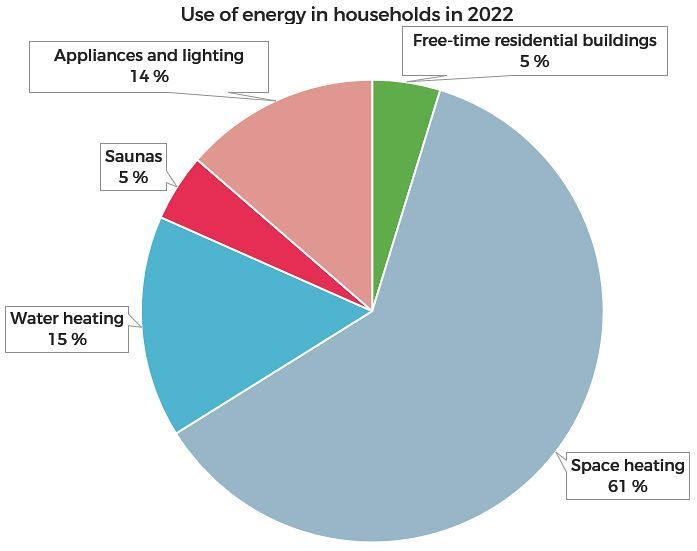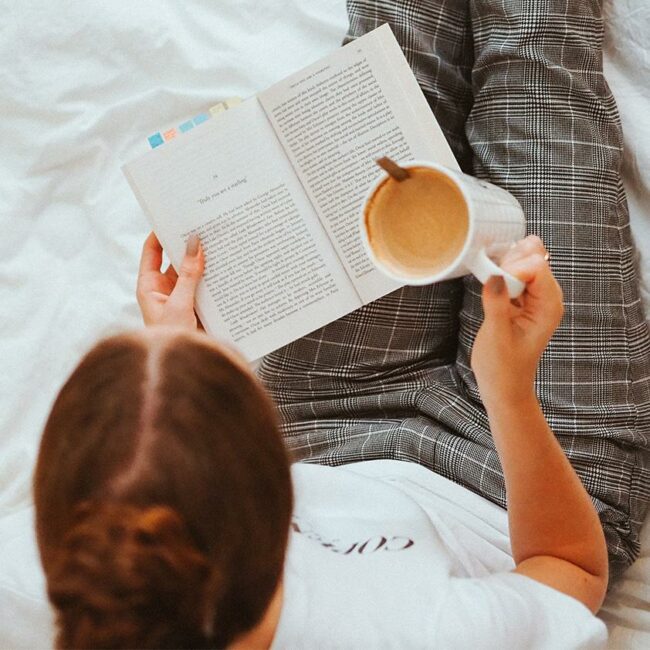Training: An energy-efficient home
In this workout programme, we will practice saving energy and improving energy efficiency at your home. We’ll be able to reduce emissions and electricity bills as well as heating costs and water billing.
What happens inside the walls of buildings makes a difference. Housing accounts for 20–25 per cent of final energy consumption. Did you know that the share of energy and water costs of the maintenance fee of a 70-square-metre apartment is approximately EUR 120 per month?
The figure below shows how the energy consumption of housing is distributed. Heating is by far the most important contributor. Various electrical appliances, from the kitchen to the sauna and lighting, come in second place. Third place goes to heating domestic water.

Picture source: Motiva.
Do you know how to use all the electrical gadgets in your home in an energy-efficient way? Do you accidentally heat your entire apartment with the underfloor heating in the bathroom? And do you know how much energy taking a long, hot shower consumes? If not, you will do when you have completed this set of exercises.
Here are your exercises!
Take control of your electricity consumption
- Take a look at your electricity consumption in your electricity company’s free monitoring service. You can track your consumption on an hourly basis. If your electricity consumption has increased, find out why. It may be caused by a faulty device, for example.
- Turn off the TV and other similar devices at least for the night and when no one is home. Many devices consume power even when they’re not turned on. If you want, you can buy power outlets with which you can completely turn off the power with a single switch.
- Check the lighting in your home. Are all the light bulbs LEDs yet? If not, replace those that are not. LEDs are suitable almost everywhere these days.
- Make sure the lights are not on when they’re not needed.
- When purchasing new devices, choose devices from the good end of the energy rating. The best energy class is A and the poorest is G. Did you know that the former A+, A++, and A+++ classes have been removed from the labels altogether?
Lower excessive temperature
- Lower the temperature in your bedroom: the recommended temperature is 18–20°C. You’ll sleep better when the temperature is cool.
- Measure the temperature at a height of about one metre in the middle of the room and adjust it downwards, if possible. In living areas, for example, 20–22°C is a pleasant temperature for most people.
- Adjust the electric underfloor heating in the bathroom in such a way that the floor doesn’t feel hot or cold to the touch (about 23–25°C).
- If the apartment feels draughty, find out when the window seals were last replaced.
Get water flow under control
- Turn off the tap when you don’t need water:
- While brushing your teeth
- While soaping and shampooing
- While shaving
- Keep water leaks under control. Check your toilet seat for leaks. You can detect a leak by placing a sheet of toilet paper at the back of the toilet bowl after the toilet has been unused for a couple of hours. If the paper gets wet, the toilet has some kind of leak. A leak can easily cost hundreds or even thousands of euros a year.
- Have a leaking toilet or other plumbing fixtures repaired and notify the maintenance company.
- Check the flow rates of taps and shower heads. Place a bucket under a tap and allow the water to flow into the bucket at full capacity for half a minute. The appropriate flow rate for shower and kitchen taps is no more than 12 litres per minute, and 6 litres per minute for a tap used for washing hands. Water-saving shower heads have a flow rate of 8–9 litres per minute.
- If necessary, replace your shower head with a water-saving model and install a constant flow or an aerator nozzle on the other taps.
- If your home has a water meter, monitor your water consumption regularly. This makes it easier to spot leaks and other water-wasters.
Raise your observations with your housing company…
- …if your apartment is too hot and you can’t lower the temperature with the thermostat.
- …if your apartment’s taps and shower heads have higher flow rates than recommended – other apartments may have the same issue.
- …if your apartment feels draughty. The problem may be caused, for example, by inadequate sealing of windows and doors or a structural defect.
